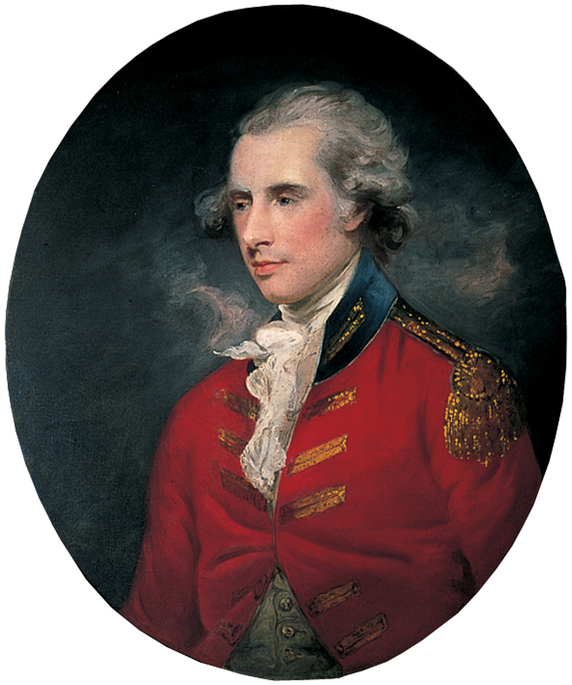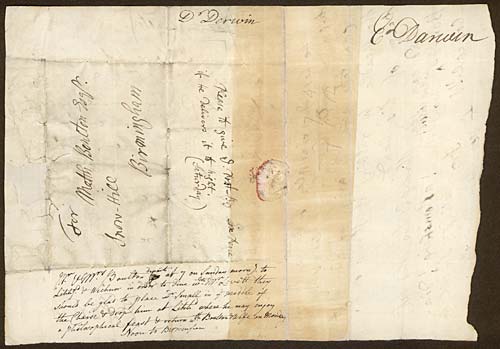|
Thomas Anson (MP)
Thomas Anson, FRS (c. 1695 – 30 March 1773) was a British Member of Parliament, traveller and amateur architect from the Anson family. Anson was the son of William Anson (1656–1720) and Isabella Carrier, sister-in-law to Thomas Parker, 1st Earl of Macclesfield. The family estate was Shugborough Hall in Staffordshire. Admiral George Anson, 1st Baron Anson was his younger brother and along with their cousin, George Parker, 2nd Earl of Macclesfield, they were taught mathematics and navigation by Isaac Newton's friend, the mathematician William Jones, who was later to propose Anson's membership for the Royal Society in 1730. Anson went up to St John's College, Oxford, and later studied law at the Inner Temple. Upon his father's death, Anson abandoned law and began the first of many travels to the continent, as was then the fashion for young men of fortune and taste. In 1732 Anson and his friend the Earl of Sandwich formed a riotous dining-club called the Society of the Dilett ... [...More Info...] [...Related Items...] OR: [Wikipedia] [Google] [Baidu] |
Lichfield (UK Parliament Constituency)
Lichfield is a United Kingdom constituencies, constituency in Staffordshire represented in the House of Commons of the United Kingdom, House of Commons of the Parliament of the United Kingdom, UK Parliament since its 1997 United Kingdom general election, 1997 recreation by Michael Fabricant, a Conservative Party (UK), Conservative. Boundaries ; 1918–1950: The Boroughs of Lichfield and Tamworth, the Urban Districts of Perry Barr and Rugeley, the Rural District of Lichfield, and parts of the Rural Districts of Tamworth and Walsall. ; 1997–2010: The Lichfield District, District of Lichfield wards of All Saints, Alrewas, Armitage with Handsacre, Boney Hay, Central, Chadsmead, Chase Terrace, Chasetown, Colton and Ridwares, Curborough, Hammerwich, Highfield, King's Bromley, Leomansley, Longdon, Redslade, St John's, Stowe, Summerfield, and Whittington, and the Borough of East Staffordshire wards of Bagots and Yoxall. ; 2010 onwards: The District of Lichfield wards of All Saints, ... [...More Info...] [...Related Items...] OR: [Wikipedia] [Google] [Baidu] |
British House Of Commons
The House of Commons is the lower house of the Parliament of the United Kingdom. Like the upper house, the House of Lords, it meets in the Palace of Westminster in London, England. The House of Commons is an elected body consisting of 650 members known as members of Parliament (MPs). MPs are elected to represent constituencies by the first-past-the-post system and hold their seats until Parliament is dissolved. The House of Commons of England started to evolve in the 13th and 14th centuries. In 1707 it became the House of Commons of Great Britain after the political union with Scotland, and from 1800 it also became the House of Commons for Ireland after the political union of Great Britain and Ireland. In 1922, the body became the House of Commons of the United Kingdom of Great Britain and Northern Ireland after the independence of the Irish Free State. Under the Parliament Acts 1911 and 1949, the Lords' power to reject legislation was reduced to a delaying power. The gov ... [...More Info...] [...Related Items...] OR: [Wikipedia] [Google] [Baidu] |
Sir Lister Holte, 5th Baronet
''Sir'' is a formal honorific address in English for men, derived from Sire in the High Middle Ages. Both are derived from the old French "Sieur" (Lord), brought to England by the French-speaking Normans, and which now exist in French only as part of "Monsieur", with the equivalent "My Lord" in English. Traditionally, as governed by law and custom, Sir is used for men titled as knights, often as members of orders of chivalry, as well as later applied to baronets and other offices. As the female equivalent for knighthood is damehood, the female equivalent term is typically Dame. The wife of a knight or baronet tends to be addressed as Lady, although a few exceptions and interchanges of these uses exist. Additionally, since the late modern period, Sir has been used as a respectful way to address a man of superior social status or military rank. Equivalent terms of address for women are Madam (shortened to Ma'am), in addition to social honorifics such as Mrs, Ms or Miss. Etymolo ... [...More Info...] [...Related Items...] OR: [Wikipedia] [Google] [Baidu] |
Hugo Meynell
Hugo Meynell (June 1735 – 14 December 1808) was an English country landowner and politician who sat in the House of Commons between 1762 and 1780. He is generally seen as the father of modern fox hunting, became Master of Fox Hounds for the Quorn Hunt in Leicestershire in 1753 and continued in that role for another forty-seven years (the hunt is so called after Meynell's home, Quorn Hall in Quorndon, North Leicestershire). Life He was born the son of Littleton Pointz Meynell in June 1735. Meynell pioneered an extended chase at high speeds through open grassland. Borrowing the pioneering breeding techniques of his neighbour, the sheep farmer Robert Bakewell, Meynell bred a new form of hound, with greater pace and stamina and a better sense of scent. In 1762 Meynell was elected as one of the two Members of Parliament for Lichfield, after filing an election petition challenging the election of John Levett of Wychnor, Staffordshire. Meynell took the seat of Levett, a Tory. Bu ... [...More Info...] [...Related Items...] OR: [Wikipedia] [Google] [Baidu] |
John Levett
John Levett (1721 — 1799) of Wychnor Park, Staffordshire, was an English landowner and investor, and a Tory politician. Biography John Levett was the son of Theophilus Levett (1693-1746), Lichfield attorney and town clerk, and his wife Mary Babington, daughter of Zachary Babington. The Levett family had common roots in Sussex, and the branch had moved to Staffordshire. Levett was educated at Westminster School and Brasenose College, Oxford, and served for a time as a barrister at the Middle Temple and the Inner Temple in London. Levett was elected Member of Parliament for Lichfield for one term only (1761-1762). After his election to Parliament, Levett is not recorded having spoken or voted while there. Questions were raised about his election and he was unseated after a petition by his opponent Hugo Meynell, who re placed him as MP. After being unseated by petition, he is not known to have stood for Parliament again. John Levett lived at Wychnor Park from 1765, when he ... [...More Info...] [...Related Items...] OR: [Wikipedia] [Google] [Baidu] |
Granville Leveson-Gower, 1st Marquess Of Stafford
Granville Leveson-Gower, 1st Marquess of Stafford, KG PC (4 August 172126 October 1803), known as Viscount Trentham from 1746 to 1754 and as The Earl Gower from 1754 to 1786, was a British politician from the Leveson-Gower family. Background Stafford was a son of John Leveson-Gower, 1st Earl Gower (1694–1754) and his wife Lady Evelyn Pierrepont. His maternal grandparents were Evelyn Pierrepont, 1st Duke of Kingston-upon-Hull and his first wife Lady Mary Feilding. Mary was a daughter of William Feilding, 3rd Earl of Denbigh and his wife Mary King. His father was a prominent Tory politician who became the first major Tory to enter government since the succession of George I of Great Britain, joining the administration of John Carteret, 2nd Earl Granville in 1742. Gower was educated at Westminster School and Christ Church, Oxford. Political and industrial investment career Stafford was elected to parliament in 1744. With the death of his elder brother in 1746, he became kn ... [...More Info...] [...Related Items...] OR: [Wikipedia] [Google] [Baidu] |
Henry Vernon (1718–1765)
{{hndis, Vernon, Henry ...
Henry Vernon may refer to: *Henry Vernon (died 1515) (1441–1515), Tudor courtier, MP for Derbyshire *Henry Vernon (died 1569) (1523–1569), MP for Lichfield and Derbyshire *Henry Vernon (cricketer) (1828–1855), English cricketer *Sir Henry Vernon, 1st Baronet (1605–1676) *Henry Vernon (1686–1719), English MP for Staffordshire and Newcastle-under-Lyme *Henry Vernon (1663–1732), English MP for Stafford *Henry Vernon (1718–1765), English MP for Lichfield and Newcastle-under-Lyme See also *Henry Venables-Vernon, 3rd Baron Vernon (1747–1829), Baron Vernon Baron Vernon, of Kinderton in the County of Chester, is a title in the Peerage of Great Britain. It was created in 1762 for the former Member of Parliament George Venables-Vernon. He had previously represented Lichfield and Derby in the House o ... [...More Info...] [...Related Items...] OR: [Wikipedia] [Google] [Baidu] |
Sir Thomas Gresley, 5th Baronet
Sir Thomas Gresley, 5th Baronet (1722-53), of Drakelow, Derbyshire, was an English Member of Parliament. He was a Member (MP) of the Parliament of England for Lichfield 30 November - 23 December 1753. He was of the Gresley baronets The Baronetcy of Gresley of Drakelow was created in the Baronetage of England on 29 June 1611 for George Gresley of Drakelow Hall, Derbyshire who was later High Sheriff of Derbyshire and Member of Parliament for Newcastle-under-Lyme. The Gresley ....http://historyofparliamentonline.org/volume/1715-1754/member/gresley-sir-thomas-1722-53 References 1722 births 1753 deaths 18th-century English people People from Derbyshire Baronets Members of the Parliament of Great Britain {{England-GreatBritain-MP-stub ... [...More Info...] [...Related Items...] OR: [Wikipedia] [Google] [Baidu] |
Richard Leveson-Gower
Richard Leveson-Gower (30 April 1726 – 19 October 1753) was the fourth son of John Leveson-Gower, 1st Earl Gower and a member of the Leveson-Gower family. He served as Member of Parliament for Lichfield from 1747 until his death, aged 27. References *''Burkes Peerage and Baronetage'' (1939), s.v. Sutherland, Duke of * 1726 births 1753 deaths Younger sons of earls Members of the Parliament of Great Britain for English constituencies Richard Leveson-Gower Richard Leveson-Gower (30 April 1726 – 19 October 1753) was the fourth son of John Leveson-Gower, 1st Earl Gower and a member of the Leveson-Gower family. He served as Member of Parliament for Lichfield Lichfield () is a cathedral city an ... British MPs 1747–1754 {{England-GreatBritain-MP-stub ... [...More Info...] [...Related Items...] OR: [Wikipedia] [Google] [Baidu] |
Earl Of Lichfield
Earl of Lichfield is a title that has been created three times, twice in the Peerage of England (1645 and 1674) and once in the Peerage of the United Kingdom (1831). The third creation is extant and is held by a member of the Anson family. History Earls of Lichfield, first creation (1645) The first creation, in the Peerage of England, was in December 1645 by King Charles I for his 4th cousin Charles Stewart (1639–1672), whose youngest uncle Lord Bernard Stewart (1623-26 September 1645) (youngest son of Esmé Stewart, 3rd Duke of Lennox), had been due to be created Earl of Lichfield by Charles I for his actions at the battles of Newbury and Naseby but died aged 22 in the Battle of Rowton Heath before the creation could be implemented. Charles Stewart, the son of Bernard's elder brother George Stewart, 9th Seigneur d'Aubigny (who had been killed at the Battle of Edgehill in 1642), was in his place created ''Earl of Lichfield'' in December 1645. In 1660 the 1st Earl succeeded ... [...More Info...] [...Related Items...] OR: [Wikipedia] [Google] [Baidu] |
Shepherd's Monument
The Shugborough Inscription is a sequence of letters – O U O S V A V V, between the letters D M on a lower plane – carved on the 18th-century Shepherd's Monument in the grounds of Shugborough Hall in Staffordshire, England, below a mirror image of Nicolas Poussin's painting the ''Et in Arcadia ego, Shepherds of Arcadia''. It has never been satisfactorily explained, and has been called one of the world's top uncracked ciphertexts. In 1982, the authors of the pseudohistorical ''The Holy Blood and the Holy Grail'' suggested that Poussin was a member of the Priory of Sion, and that his ''Shepherds of Arcadia'' contained hidden meanings of great esoteric significance. The book makes a passing reference to the Shepherd's monument and the inscription, but offers no solution. In 2003, Dan Brown copied many elements of ''The Holy Blood and the Holy Grail'' in his bestselling novel ''The Da Vinci Code'', but made no mention of the Shugborough inscription. However, the book led to renewe ... [...More Info...] [...Related Items...] OR: [Wikipedia] [Google] [Baidu] |






